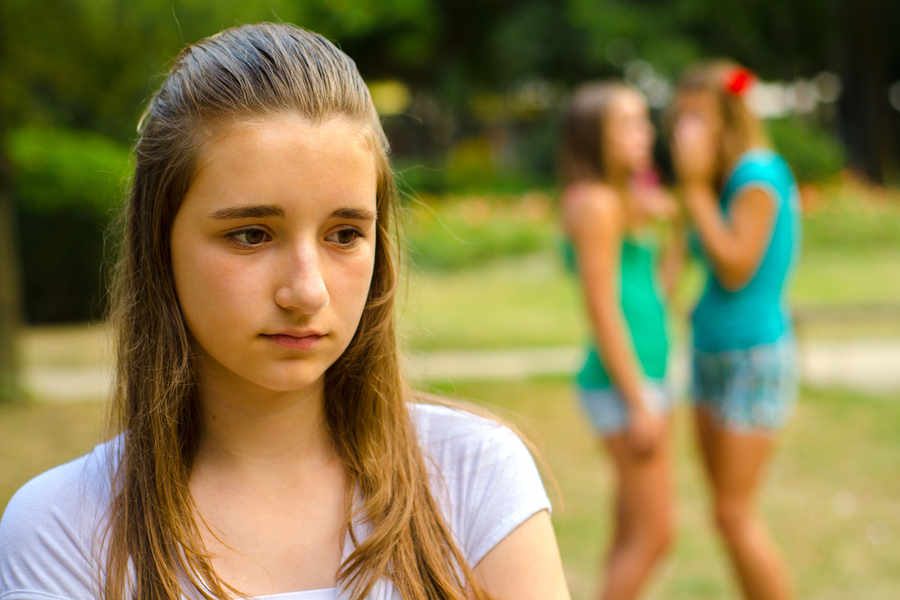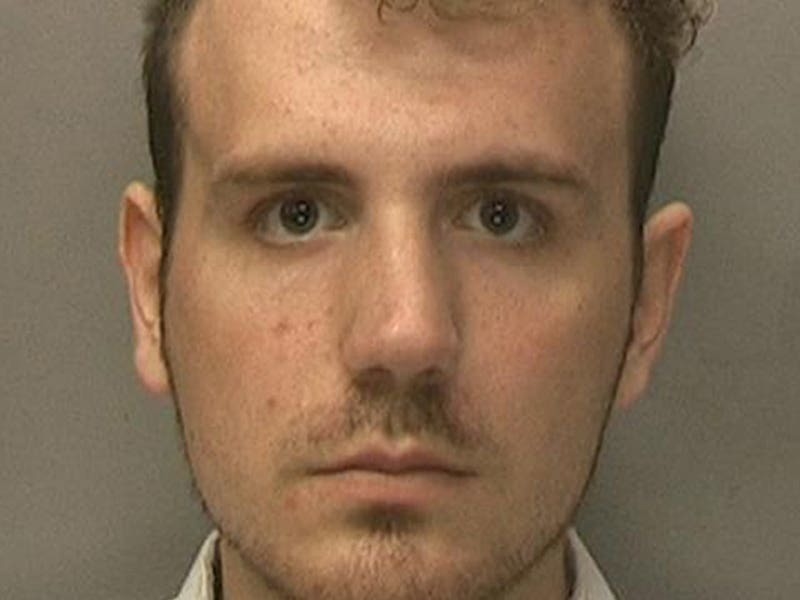- -Officials worried about the number of teenage girls suffering low self-esteem.
- – Findings of latest Young Peoples Health survey released, completed by 2,675 pupils.
- – See what the survey found in terms of smoking, alcohol and drugs.
WORK needs to be done to tackle the ‘concerning’ number of teenage girls who suffer from low self-esteem, says the Island’s Medical Officer of Health.
The mental wellbeing of the Island’s youth has been revealed in a report published by the Health Department, which focused on a number of topics from smoking to exercise.
Figures show that in the last 12 years there has been a sharp decline among 14 to 15-year-olds assessed as having medium-high self-esteem.
To assess self-esteem. pupils were asked nine questions which ranked their self-esteem between high, medium and low. Medium self-esteem is further broken down to medium-high or medium-low.
Between 2002 and 2014 medium-high self-esteem among 14 and 15-year-olds dropped from 87 per cent to 75 per cent.
Meanwhile, a clear gender divide has emerged from the report with 81 per cent of boys and 69 per cent of girls aged between 12 and 15 being assessed at having medium-high self-esteem.
Girls were also shown to worry more frequently than the opposite sex.
Exams, what people think about them and the way that they look were among the problems that girls said they worry about on most days.
The figures from the Young People’s Health survey, which was completed by 2,675 pupils, also show that the percentage of children aged between ten and 15 with medium-high self-esteem scores are generally slightly lower in Jersey than compared to their UK peers.
Today, Dr Susan Turnbull, Jersey’s Medical Officer of Health, said that the rise in the number of teenage girls with medium-low self-esteem was ‘worrying’ and added that they would be looking at the data more substantially to help improve youth mental wellbeing.
‘This is an area of concern, she said. ‘This is the first time we’ve seen some falling off in medium-high self-esteem.
‘I’m quite inpatient to find out what the cause is.
‘We will be talking to schools to see what they make of this and see if there are any particular patterns.
‘We can feed back to schools on a confidential basis, there are no links to children’s names. It may be that some particular schools have high levels of low self-esteem.’
The report also revealed that young people were engaging in risky sexual behaviour.
Of the 14 per cent of 14 to 15-year-olds who have had a sexual relationship, 45 per cent did not use a condom the last time they had sex.
And 27 per cent of those who had been in a sexual relationship had not used any form of contraception.
Dr Turnbull said the report showed that more work needed to be done, perhaps through Personal Social Health Education lessons at school, to educate young people on the importance of using condoms to protect against sexually transmitted diseases.
We looked in more detail at some of the key findings of the new report into the health and lifestyle of young people in Jersey:
DRUGS, diet and exercise are among the topics that schoolchildren have been questioned about to enable a health profile of the Island’s youth to be drawn up.
The Young People’s Health Survey, which was published in full on Monday, is carried out every four years and questions children aged between ten and 15.
It is used by the Health Department to introduce initiatives to improve health.
Forty schools took part in the survey last year, with pupils in Years 6, 8 and 10 answering questions on a range of health and lifestyle behaviours. In total,
2,675 pupils responded to the questionnaire, representing 86 per cent of all young people of these ages in Jersey.
Smoking

- More young people are reporting that they have never smoked. The percentage who have never lit up has increased year on year, from 53 per cent in 1998 to 84 per cent in 2014.
- Meanwhile, the poll showed that smoking behaviour patterns in Jersey are similar to those in the UK and Guernsey.
- The number of 14 to 15-year-olds who smoke heavily has not changed since the last survey 51 per cent of this group reported that they smoked more than 25 cigarettes a week.
- Within this category of regular smokers, 43 per cent said they got their cigarettes from a friend.
- Nearly three quarters of this group have attempted to kick the habit, with 38 per cent saying that they would like help to quit.
Alcohol
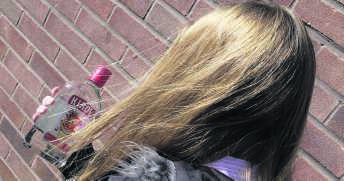
- The percentage of young people who have never drunk alcohol has increased.
- Fifty per cent of 12 to 13-year-olds report never drinking alcohol compared with 20 per cent in 2010.
- One in five 14 to 15-year-olds say they have never drunk alcohol compared with nine per cent in 2010.
- The data suggests that at least 41 per cent of 14 to 15-year-olds who did drink did so at a level that would be considered harmful for adults more than three daily units for females and four for males on at least one day a week.
- And 15 per cent drank at a level that would be considered to be binge drinking more than six daily units for females and eight for males.
- Cider was drunk by the greatest percentage of young people in the seven days leading up to the survey, closely followed by spirits and beer.
- The top three drinks consumed by girls were spirits, wine and cider. This is a change from 2010 when alcopops were the second most consumed drink for this group.
- There has also been a shift in where young people drink. In 2010 nearly 50 per cent of 14 to 15-year-olds reported drinking in a public place.
- Most people in this age bracket now say that they drink at home or at a friends house, with 25 per cent reporting drinking at a disco and 25 per cent in a public place.
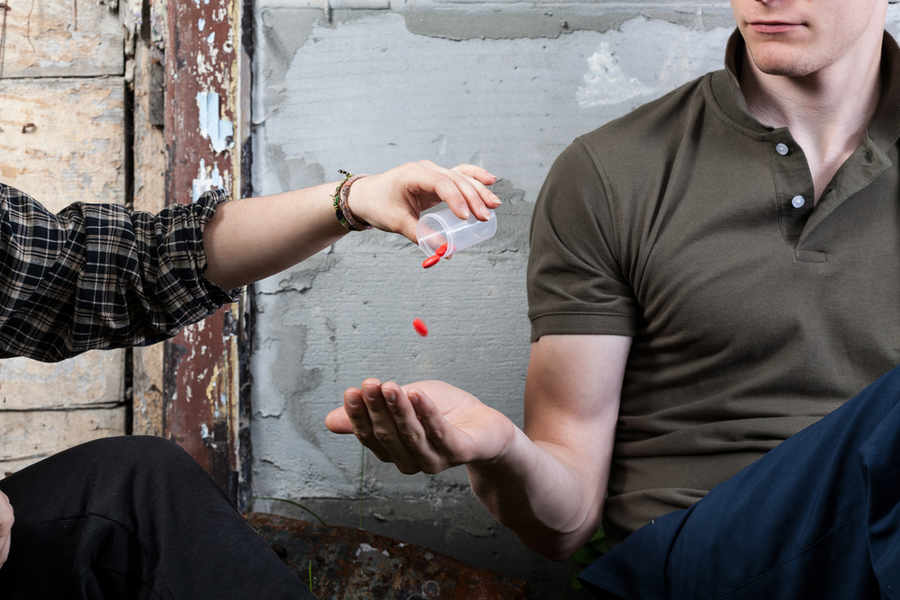
- The percentage of young people in Jersey reporting that they have taken drugs is similar to the UK but greater than in Guernsey.
- Two per cent of ten to 11-year-olds report being offered cannabis, compared with 33 per cent of 14 to 15-year-olds.
- Cannabis was reported to have been the drug the greatest number of 14 to 15-year-olds have tried followed by new psychoactive substances, laughing gas, the synthetic marijuana Spice and solvents.
- There has been little change in the percentage of young people who have been offered drugs since the last survey in 2010, when there had been a decrease from 2002.
- Reported drug use has also changed very little since the last survey.
- Overall there has been a downward trend in cannabis use among 14 to 15 year-olds over the past 12 years from a high of 36 per cent in 2002.
- Of those 14 to 15-year-olds who have taken drugs, 21 per cent have reported taking more than one type of drug on the same occasion.
- Meanwhile, eight per cent of this group say they have taken drugs and alcohol together.
Diet and obesity
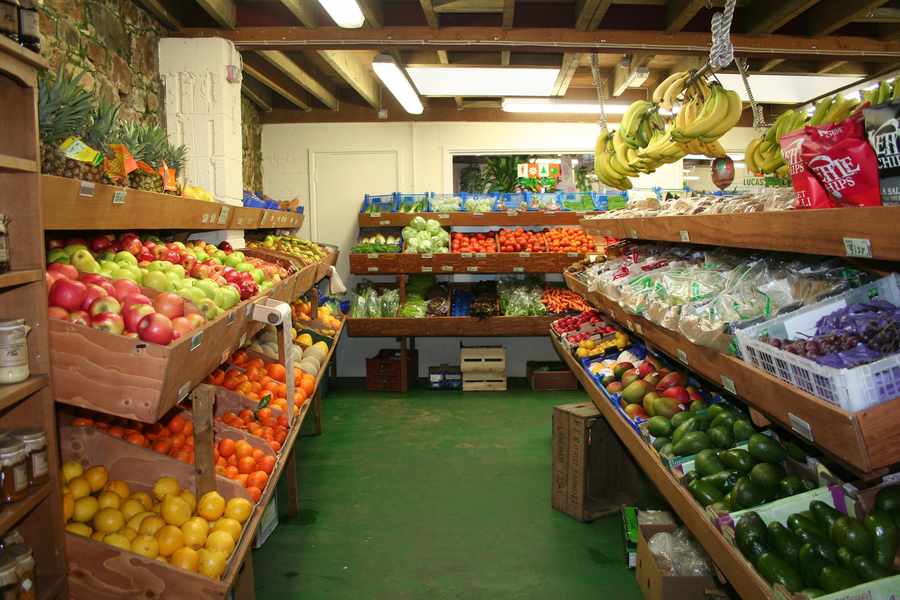
- According to self-reported height and weight figures, the majority of young people were classified as being a healthy weight. Nearly one in five 18 per cent were overweight or obese and 11 per cent were underweight.
- Seventy-eight per cent of young people said that they had not eaten the daily recommended five portions of fruit and vegetables the day before the survey. The average daily portion of fruit and vegetables consumed is three similar to the UK.
- And 85 per cent of young people do not drink the recommended two litres of water a day, with seven per cent reporting that they drank no water on the day before the survey.
Physical activity

- In the week before the survey, just under a quarter of ten to 13-year-olds met the nationally recommended level of undertaking at least an hours exercise a day.
- This decreased to 17 per cent for 14 to 15-year-olds.
- A higher proportion of boys meet the recommended level of exercise than girls.
- Meanwhile, nearly a quarter of 14 to 15-year-olds reported watching at least three hours of television the day before the survey.
- And one in seven 14 to 15-year-old boys spent five or more hours playing computer games the day before the survey.
- Thirty-eight per cent of 14 to 15-year-olds reported spending more than two hours online a day.
- The percentage of young people who reported spending two or more hours a day on a sedentary activity such as watching TV or playing computer games is lower in Jersey than in England across all age groups.
- The only exception was 14 to 15-year-olds playing computer games, where a similar proportion played for two or more hours the day before the survey compared with England.
In 2014, local teenager Francesca Sohier explained what it is like to be a teenager in a world obsessed with technology
TEENAGERS have always felt that their parents do not understand them, but nowadays this is truer than ever.
I know because I have grown up in an era unrecognisable to my parents or grandparents, thanks to advances in technology.
The problems faced during my teenage years may have been similar to theirs, but the way in which they arise and are dealt with is completely different now. The internet is the main culprit. Yes, it provides many advantages like easier communication and educational benefits, but it can also be dangerous. For example, it has led to the creation of cyberbullying and sexting.
The name-calling and teasing that takes place in the playground often continues online and, because of our dependency on technology, it is virtually impossible to escape. I have seen friends suffer the effects of online bullying. They’ve received anonymous, derogatory remarks about their weight, appearance and relationships. I’m not immune to this – I’ve received similar comments.
I ignored the things the bullies said, but not everybody can do this. It can lead to young people feeling alone, or desperate to fit in, and they may then be pressured into sexting – sending explicit photos of themselves. It’s far more common for young people to send these photos to friends they trust, rather than to total strangers, but this doesn’t stop them from being sent on to more people than what was originally intended.
I’ve seen people having to cope with their explicit images going viral. The possession of these photos is illegal when the child involved is under 16. To not know who has seen this photo of you, especially somewhere like Jersey, must have a serious psychological impact, particularly when the police, school and parents become involved in rectifying the problem.
Teenagers today have easier access to a wider range of options compared to teenagers in the 60s, 70s or 80s. There are some instances where this has become a valuable tool. For example, I have seen it become more socially acceptable for young people, in particular teenage boys, to ask to speak to counsellors. I feel like my parents’ and grandparents’ generations were taught to ‘stop snivelling’ and just deal with their problems. Often, they didn’t have a school counsellor, which is commonplace now. Some people might not see this as a positive and believe that a stiff upper lip is the best way to deal with things. But to be able to talk to someone impartial about your problems really helps young people feel supported and less alone.
However, we can now also access things which have a negative impact on our wellbeing. You are only ever a few clicks away from the controversial, weird, disgusting and even illegal material the internet holds. The popular blogging site Tumblr has recently faced criticism after teenagers used it to post pro-eating-disorder material.
In the privacy of your own bedroom anything can happen without parents knowing, and what may start out as innocent curiosity can lead to something far more sinister. Teenagers just want to belong. They always have and they always will.
Today, many teenagers join internet forums such as these to feel part of a community, because despite the dangers these sites pose, the users often refer to themselves as a family and support one another through their ‘journeys’. There is a stereotype that if you’re a teenager who wears a hoodie and hangs out on the streets, you are a dangerous thug with no future who drinks to excess and takes drugs.
Teenagers are incredibly vulnerable and easily influenced, so if they’re constantly being told that they must fit a certain stereotype, why would they try to argue with this? There’s also the myth that teenagers from more middle class and affluent backgrounds don’t suffer the same problems, but with pressure to attain good grades in school and win competitive university places, this simply isn’t true anymore. Teenagers from this demographic are reporting increases in eating disorders and other mental health problems.
Regardless of where you live or what school you go to, no one is immune to the pressures and problems of being a teenager. The idea that teenagers are being overdramatic or that they caused their own problems may be down to a generational rift. People forget what it was like to be a teenager, or look back on their younger years with a sense of nostalgia.
Every teenager struggles to cope at least some of the time.
Funding crisis for teen charity
YESTERDAY it emerged that a counselling service which helps some of Jersey’s most troubled youngsters may have to start turning people away after being overwhelmed by a surge in cases.
The YES Project is struggling to fund the cost of counselling following a rise of more than 1,000 appointments in the past six years.
Since 2009 – the service’s first full year – the number of counselling appointments has increased from 213 to 1,266.
There was an increase of 347 appointments alone last year. The number of new counselling referrals has also gone up, from 40 in 2009 to 158 last year.
Young people aged from 14 to 25 get free and confidential appointments with the service’s six counsellors, who are employed on zero-hours contracts and work around their full-time jobs.
The service has worked with the same number of staff since 2012, despite a huge rise in appointments.
- The Youth Enquiry Service (YES) first opened in 2008.
- As well as offering a drop-in service for young people it also provides one-to-one counselling as well as online advice on a broad range of issues.
- YES was developed by the Youth Service in partnership with the Jersey Youth Trust.
- It was created to support young people aged 14 – 25 with any issue that affects them.
- YES works with young people on any issue, for example: homelessness, benefits, advocacy work, crime, education, parenting, leaving care, drugs and alcohol, issues around sexuality, emotional health, relationships, sexual health and rights and responsibilities.
Find out more about YES here
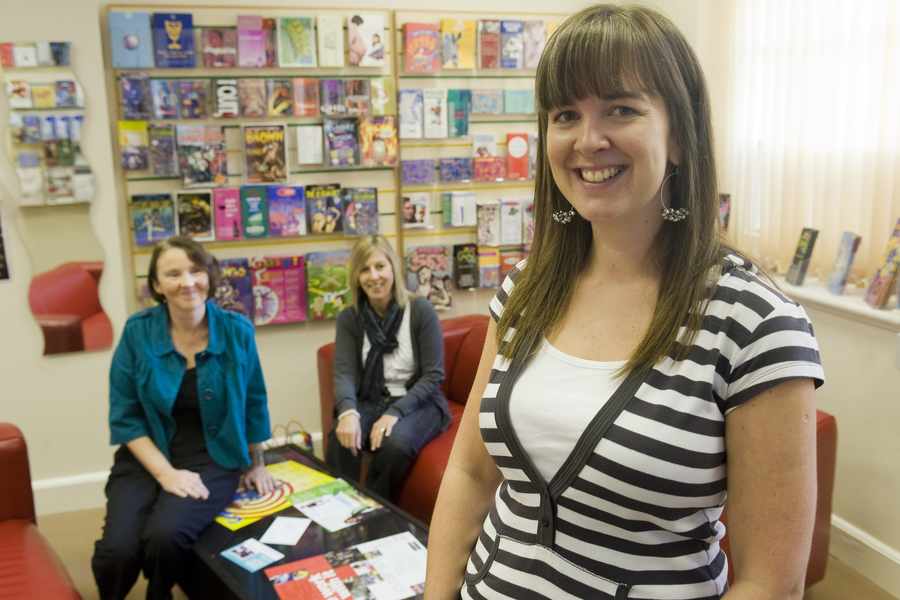
- In July 2014, Islanders were given the opportunity to ask questions about sexting during a live web chat with a police officer, a school-based social worker and a youth worker
- Held via the Jersey Police Facebook page, the chat received more than 270 views and was held as part of a police campaign to raise awareness of child sexual exploitation.
- It came after police in the UK warned teenagers about the dangers of sending explicit images and that there was a possibility that they could be placed on the Sex Offenders Register.
- Sexting is when an individual takes an explicit image of themselves and sends it to others using a mobile phone or another form of technology.
- In Jersey, it is illegal to make, possess or distribute indecent images of children under the age of 16. This means that anyone under the age of 16 who takes and sends an indecent image, even if it is of themselves, is breaking the law. Anyone who possesses indecent images of those under 16 is also breaking the law.
Here are the questions asked during the chat and the responses given by the police:
Why do people do sexting?
There is a lot of pressure on young people and they often don’t think of the consequences. Sadly sexting is seen as ‘normal’ but what we need is for young people to know the impact it could have on their lives.
What exactly is classed as sexting?
Sexting is taking or sharing inappropriate or explicit pictures/videos of yourself or others.
How common is sexting?
It is more common than people think and cases are reported across the Island almost every day. Many young people don’t see sexting as a problem and don’t want to talk to an adult about it as they are afraid of being judged or having their devices taken away.
Where does sexting occur? Is it just by phone?
It occurs in a number of places including live one-toone video chats on websites, video chat via instant messaging, files sent by email to another person, files uploaded to public video hosting websites, files being sent as attachments during online chat sessions and files used as profile images or posted on social networks.
Can I get in trouble if I have sent a picture?
Yes you can, but if the photo has been sent innocently or in the confines of a relationship it is not the intention of the police to prosecute someone. Our overall aim is to educate young people in relation to being safe online. However, if there are aggravating factors where someone has been made to take photos against their will, there is an adult involved or there are repeat incidents with the same people then the police would investigate.
If someone is asking me to send them photos what should I do?
Please say no. Don’t feel under pressure. Just think – if you wouldn’t show the photo to your nan or around school then don’t send it because that’s where it could end up. Stand up for yourself, you know what is right and it’s you that would have to live with the consequences. Saying no is okay. Seek support from an adult you trust.
Would I get into trouble if I have received sexts?
No, not if you report it to someone. However, if you forward it on to someone else you could be in trouble for distributing.
How can I stop someone sending them to me?
You can block particular numbers or users on social networks. The best thing to do is to speak an adult you trust about it.
Where can people go when in need of support?
The Youth Enquiry Service (YES), Brook, Children’s Services or the police can all help and offer advice. There are also a lot of good websites which give advice including CEOP and the NSPCC. There are things that can be done to control the circulation so report as soon as possible.
Are parents being taught how to block inappropriate sites?
The amount of info being shared with parents is not as much as we would like, but if there is something specific you would like advice on let us know and from where and we can work on that. There are ways for parents to block sites using parental controls and via info from your internet service provider.
What should I do if I find an image of my child on her phone?
Offer reassurance and try not to panic, ask them who they have shared it with, inform the provider or website, speak to someone eg police or children’s service and don’t delete it from their phone. If you need advice at any time call the Public Protection Unit at the Police.
How will I know if my child is involved in sexting if they don’t tell me?
Here are some things you can look for:
- Long hours on the computer
- Closes window on their computer when you enter the room
- Secretive about internet activity
- Behaviour changes
- Always doing homework on the internet, but always in chat groups and getting behind on school work
- Wont say who they are talking to
- May find unexplained pictures on computer
- Trouble sleeping
- Stomach and headaches
- Lack of appetite
- Crying for no apparent reason
- Change in attitude, dress or habits
- Acting out aggression
If you find an image on your child’s phone would it be wise to report your child to the police or simply deal with it as a parent and delete the image?
No parent wants to see their kid’s phone seized, especially as we’re the ones who have paid for them in the first place. Our advice would always be to report it as this could be part of a wider picture/issue which may come to light at a later stage or currently be subject of an investigation. If it is a one-off image that has been taken in innocent circumstances, it may be that the police can deal with it and return the phone. However, in some circumstances the police wouldn’t be able to return the device. Although images can be deleted, it doesn’t actually mean they have been removed from the device. It all depends on the circumstances and whether there are aggravating factors.
Is there any education around this issue for young people?
There are lots of different agencies, including social workers and Brook, which visit schools and deliver lessons. The police work with schools. The YES project are also available to offer advice.

